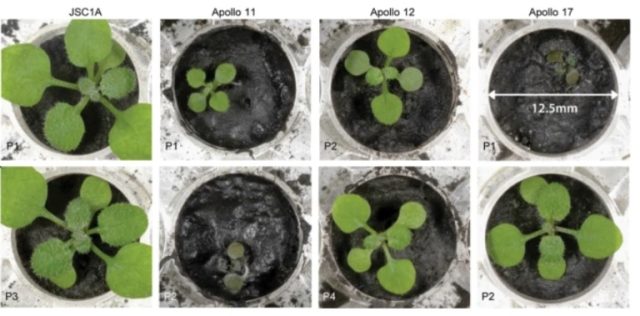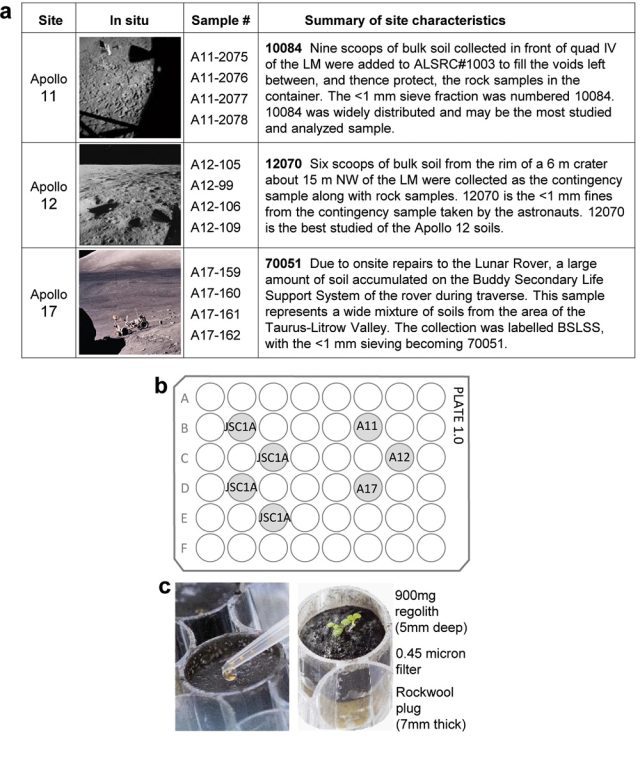Earth samples from the moon were taken during NASA missions in 1969 and 1972. Now scientists have managed to plant seeds of Arabidopsis thaliana, popularly known as gooseberry, in the lunar soil.
Despite the lack of organic matter and the large differences between the structure of the lunar earth and that of the Earth, the researchers noticed that the plants began to germinate. Reuters explains that this discovery offers a new perspective on the possibility that humans may live on other planets. Just the thought of a plant growing in this alien material offers so many possibilities and a very interesting new perspective over future explorations.
The researchers planted the seeds in containers with lunar soil, in which they added a nutrient and left them at 23 degrees Celsius, under a pink LED light. After three days, the plants began to sprout, and after about a week, the researchers removed them all, leaving only one to grow for up to 20 days, to observe its evolution. This surely isn’t the last time this experiment will headline the news, as this is only the beginning.
When we first saw that abundance of green sprouts cast over all of the samples, it took our breath away,” said horticultural sciences professor Anna-Lisa Paul, director of the University of Florida Interdisciplinary Center for Biotechnology Research and co-leader of the study published in the journal
“Plants can grow in lunar regolith. That one simple statement is huge and opens the door to future exploration using resources in place on the moon and likely Mars,” Paul said.
Fig. 1: Lunar regolith sources and experiment set up.
















